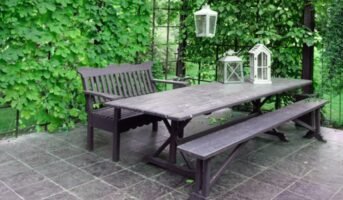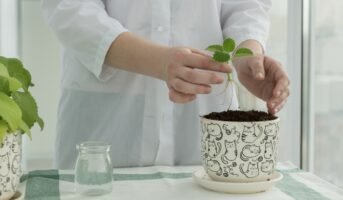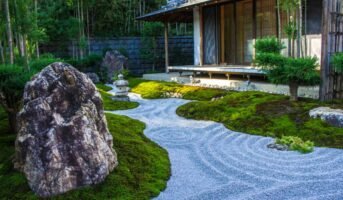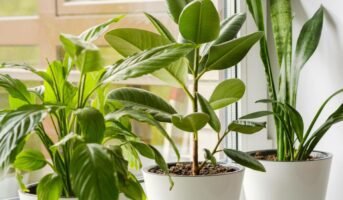Whether your balcony is big or small, sunny or shaded, facing north or east, a set of plants on balcony is sure to beautify your area and make it more inviting for you and anyone who arrives. Consider how much sunlight your balcony receives during the day before making a purchase, though. You may choose the best plants based on whether they enjoy the sun or the shade by reading the label or description of the plant.
Make sure to give your plants regular watering if your balcony is covered. When you decide to remodel your balcony, there are a variety of options available, including pots that may be hung on the grills. These are some low-maintenance plants that would be ideal for your balcony in terms of both care and aesthetics.
15 plants for your balcony
Aloe Vera
If you don’t already have this multitasker in your home, it is strongly advised that you do so immediately. It can be used to treat little wounds that the kids bring home, rejuvenate skin and hair, and can be used in homemade remedies. This insect-resistant plant won’t require your attention often; water it only when the soil is entirely dry. This plant is surely a multitasker without a doubt.
Sunlight: Bright, indirect sunlight.
Water: Throughout the summer, water the plant once every two to three weeks and less frequently the rest of the year.
Maintenance: Low

Source: Pinterest
Hibiscus
A vacation without leaving the house? Hibiscus flowers are an unusual addition to a balcony because of their vibrant colours and exotic flowers. You should check the label to make sure you’re giving them enough room because some types grow rather large. However, it can be challenging because they require full sun.
Sunlight: All hibiscus plants grow best in full sun.
Water: Throughout the first several weeks following planting, all hibiscus plants require thorough watering every other day or two. After that, during the first growing season, water perennial hibiscus twice a week.
Maintenance: Both tropical and hardy hibiscus are thought to require low maintenance and are simple to grow and take care of.

Source: Pinterest
Sweet Alyssum
You’re missing out if you haven’t planted this sweet annual yet! From spring till frost, sweet alyssum blooms with little, sweet-smelling flowers. The best part is that pollinators adore it! Give it space in pots or hanging baskets so that it can flow over the sides, and make sure to water it. It tolerates some shade but requires sunlight.
Sunlight: Sweet alyssum prefers full light, although it will grow best in a spot with afternoon shade.
Water: Every week, give your sweet alyssum plants at least an inch of water; during hot days or dry spells, water them more often.
Maintenance: Relatively low maintenance. They occasionally tend to get lanky, though.

Source: Pinterest
Pothos/devil’s ivy plant
It is not known how this plant came to be regarded as a “money plant,” but if you have it in your home, a financial crisis is said to never occur. The heart-shaped leaves of this plant, while undoubtedly appealing, should not be exposed to direct sunlight on your balcony. Give it a weekly watering and allow it to purify the air before it enters the room. If there is a space issue, grow it vertically along the railings or windows of your balcony.
Sunlight: Put your pothos in a location with bright, indirect sunlight. Although they can endure low light, their growth will be stunted.
Water: Water just when the soil feels dry to the touch, but watch out for overwatering.
Maintenance: Low; usually, the main cause of death is too much attention.

Source: Pinterest
Spider plant
With leaves that display a spider-like look, this plant can give any balcony a wild, untamed appearance. Maintain the soil’s moisture during the summer, but don’t water it before the soil dries out during the winter. Put two pots of this adorable little plant along the balcony entrance and enter a whimsically charming balcony!
Sunlight: Outdoor, spider plants favour growing in partial shade. The leaves may become scorched by direct sunlight.
Water: Your spider plant just needs a small amount of water once a week or so; during the fall and winter, you can water it less frequently.
Maintenance: Spider plants are one of the most resilient, low-maintenance houseplants.

Source: Pinterest
Caladium
The beautiful heart-shaped leaves and vivid lime green, hot pink, and red patterns of the caladium are the reasons it should be planted on your balcony. Caladiums can grow to be around 10 inches and 2 feet tall, so it’s vital to check the label before giving it a pot that will allow it to spread out. It needs partial shade to be shaded.
Sunlight: The ideal growing conditions for caladiums are indirect sunlight, shade to part shade (with two to four hours of direct sunlight, ideally in the morning), or strong dappled light. While planting sun-tolerant caladiums in full light, keep in mind that they may require additional watering.
Water: When the top inch of soil on your caladium becomes dry, which usually happens once a week, water it thoroughly.
Maintenance: Caladium bicolour is an easy-to-grow indoor or house plant that requires low maintenance.

Source: Pinterest
New Guinea Impatiens
New Guinea impatiens are a dependable choice for long-season beauty, coming in cheerful hues ranging from peach to hot pink. Deadheading (pinching back) is not necessary to promote flowering until the first frost. These annuals typically perform better in pots than in hanging baskets, which are challenging to maintain with water over the summer. For these, partial shade is required.
Sunlight: Full and partial sunlight is required for New Guinea impatiens. Morning sun and afternoon shade are ideal for them.
Water: With regular watering, New Guinea impatiens thrive.
Maintenance: New Guinea impatiens offer a low-maintenance and high-performance option.

Source: Pinterest
Fuchsia
The window boxes and hanging baskets are the finest places to display these gorgeous annuals, which come in pink, red, or purple hues. They are adored by butterflies and hummingbirds. Fuchsia requires complete shade.
Sunlight: Fuchsias are called shade plants, yet to grow and bloom, they require a lot of sunlight.
Water: Fuchsias should be watered when they dry out. But, growing fuchsias in containers is far more difficult. The watering routine may be two or three times a week in the spring when it’s cool outside and they haven’t fully developed.
Maintenance: Fuchsias require little care as long as you provide them with sunlight, well-drained soil, and a protected location. The moisture level of the soil must be considered when caring for fuchsia plants.

Source: Pinterest
Lobelia
Low-growing lobelia in shades of blue, purple, or white look stunningly flowing from baskets and containers. Before temperatures drop too low at night, it blooms at its best. Trim the plant back if it stops blooming, and it will grow back when the weather gets cooler. Although it may survive mainly in the shade, lobelia prefers morning light and afternoon shade the most.
Sunlight: The lobelia plant thrives in broad sunlight to light shade.
Water: The plant needs watering about twice a week, especially during the dry season.
Maintenance: The lobelia plant takes little maintenance once it is established.

Source: Pinterest
Rose
Contrary to popular belief, growing roses is simple. Select a rose that will do well in pots, such as a tiny variety or a shrub rose. For optimal blooms, make sure it receives at least six hours of sunlight. They are usually a terrific addition to your balcony because they don’t require a lot of attention to keep them healthy.
Sunlight: Roses need direct sunlight to thrive. Yet, some shade is beneficial in the hot summer weather.
Water: Roses should be watered once or twice a week for established roses and every two to three days for newly planted roses.
Maintenance: Roses have a reputation for being high maintenance.

Source: Pinterest
Herbal plants
Herbs are a low-maintenance addition to any balcony, and you can always cut some off for cooking. Choose rosemary and basil if you have direct sunlight. Chives and cilantro are suitable for partial sunlight. Depending on the variety, herbs require both sun and shade. To improve the atmosphere of your room, you can also keep mint, thyme, basil, holy basil (tulsi), curry tree, and other therapeutic plants. Indian basil, also known as tulsi, is well-known for its therapeutic properties and capacity to strengthen the immune system. These are among the most suitable plants for a balcony.
Sunlight: The majority of herbs require moderate sunlight. The majority, however, can handle far more sunlight, with herbs like rosemary, lavender, and basil flourishing in direct sunlight.
Water: Generally, two to three times a week should be plenty to water your herbs. Basil, cilantro, mint, and parsley are among the herbs that need more watering.
Maintenance: Low

Source: Pinterest
Jade
The jade plant, one of the best outdoor plants, is affectionately referred to as the “friendship tree.” It doesn’t burn in the sun, doesn’t require any water, and can grow in even the aridest soils. In other words, it endures the worst of circumstances just like great friendships do!
Sunlight: At least six hours of bright light per day are required for jade plants. They cannot grow adequately without direct sunlight.
Water: Because jade plants are succulents, which store water in their leaves, they do not thrive in soil that is always damp. It will probably be good to water once every two to three weeks, but be careful to check often!
Maintenance: Low

Source: Pinterest
Hydrangea
You may certainly grow these gorgeous bushes in pots on your balcony. Choose a sizable pot made of a material that won’t freeze and crack in cold climes, and look for dwarf varieties. Read the plant tag because certain varieties can withstand more sun than others. Hydrangeas require partial shade and sun.
Sunlight: They can survive in both the sun and the shade. While hydrangeas prefer the morning sun, they struggle in the hot afternoon sun. For these gorgeous plants, partial shade in the later hours of the day is optimal.
Water: Throughout the growing season, water 1 inch every week. Water deeply three times each week to promote root development.
Maintenance: They are relatively low-maintenance.

Source: Pinterest
Lettuce
Yes! Lettuce! Plant some fresh mesclun on your balcony in the sun. There are many different varieties, they’re simple to grow, and you only need one or two window boxes (their roots are shallow). While it is sprouting, keep it moist. As the pieces mature, trim (don’t pull!) them off. It will continue to produce till extremely hot weather approaches. Sunlight is primarily necessary for lettuce.
Sunlight: While some lettuce varieties can thrive in moderate shade, most lettuce species prefer full, direct sunlight.
Water: Because lettuces have shallow roots, they require frequent watering, particularly in warm or windy conditions. More frequent watering is required for lettuce containers, especially during the heat.
Maintenance: Low maintenance and easy-to-grow plants.

Source: Pinterest
Boston Fern
The Boston fern, the most exquisite-looking fern with frilly leaves and dangling fronds, will look magnificent in a basket suspended from the balcony ceiling. This plant is so simple to look after that you may leave for a lengthy journey, go to Boston, and come back to it still looking green.
Sunlight: Boston ferns are adaptable plants that do well in indirect light that is both bright and moderate.
Water: These ferns LOVE water! Thoroughly water the plant, especially on warm summer days. Watering your fern twice daily is a good idea on really hot days.
Maintenance: Low maintenance houseplant and is easy to care for.

Source: Pinterest
FAQs
Which herbs can be grown on a balcony?
Lavender, thyme, and basil are just a few of the herbs that grow effectively on balconies. Lavender has by far the most eye-catching blossoms of the bunch. Your balcony garden can benefit from the addition of colour and a delicious aroma due to the hundreds of varieties of this aromatic plant that bloom in a stunning array of purple or white hues. Plant herbs like holy basil and mint for therapeutic uses.
How do you maintain the plants on your balcony?
Feed your plants a diluted liquid fertiliser once a month or so in the spring and summer. When adding the fertiliser, make sure the soil is moist because using fertiliser in dry soil will damage your plant. Moreover, you may need to repot the plant or refresh the compost on occasion.
| Got any questions or point of view on our article? We would love to hear from you. Write to our Editor-in-Chief Jhumur Ghosh at jhumur.ghosh1@housing.com |
Saswat Kumar, a real estate writer, keeps up with the latest trends in residential real estate. He simplifies complex real estate jargon, making it accessible to all. Saswat’s data-driven analysis empowers buyers and investors to make informed choices in the housing market.












